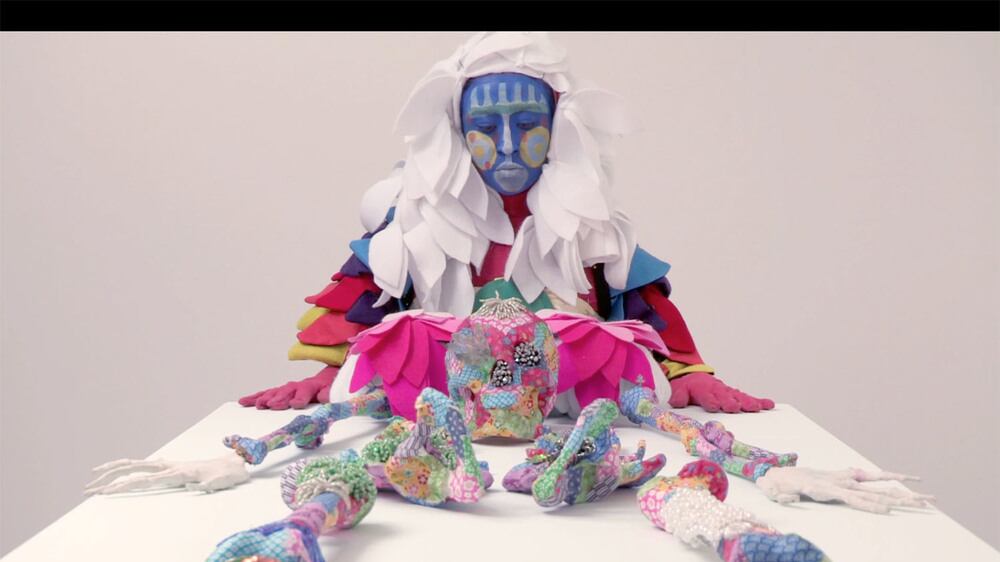When you go to an art show, the person who has the most control over how you interpret the works isn't you or the artist, it's the curator.
Take Paige Powell's work, for example. Working as photographer for Andy Warhol's Interview magazine in the '80s, the Portland artist amassed a collection of personal photos of Warhol, New York art world parties and of her partner, the late artist Jean-Michel Basquiat. Two years ago, Powell debuted her personal photographs of her years in New York in a solo exhibit at the Portland Art Museum. Under a disco ball, her photographs wallpapered a corner of the exhibit. For most people, the photos were a voyeuristic, behind-the-scenes look at a much romanticized place and time. There were copies of photos you could take home with you, including one of a grinning, young-ish Bill Cunningham, his camera around his neck as poses with a drag queen. It was easy to forget that for Powell, they're personal memories.
Related: Paige Powell's The Ride shares unseen moments with Jean-Michel Basquiat and Andy Warhol
But in the group exhibit (self), on Reed College's campus as part of this year's Time-Based Art Festival, they look like they're from a scrapbook. Arranged in a long glass case, she's labeled portrait subjects by their first names in crayon. There's one of Warhol that Powell outlined with silver marker and captioned "Behind every cloud is a silver …" and a series of postcards Basquiat sent Powell from Italy, with blobs of paint instead of words.
Curated by Stephanie Snyder and Samiya Bashir, (self) contains works by a large group of local and national artists. If "self" sounds like a vague theme for an art exhibit, that's intentional. Usually in group exhibits, an individual artist's work serves a larger theme of the show. But each installation in (self) feels like its own world.
Across the room from Powell's case is Truth Library, by Portland duo the Nat Turner Project. NTP has basically installed a living room: a plush couch, a wooden coffee table and chairs on a fuzzy grey rug. Mounted on the wall behind the couch are shelves stocked with books and albums: a copy of Malcolm X: A Life of Reinvention, LPs of DAMN. and The Miseducation of Lauryn Hill, a DVD of Friday. It's warmly inviting—you are actually supposed to sit on the furniture and read the books—and brilliantly simple.
Related: The Nat Turner Project Creates Literate Space For Artists of Color In The June Show
Brooklyn artist Nona Faustine's Mitochondria is a series of photos that depict the artist, her daughter and Faustine's mother. Some look like they could be candid, like the photo where Faustine carries her daughter on her back through waves off an ocean shore. But even the photos that are staged are just as overwhelmingly and beautiful. In one, Faustine throws a punch, naked except for white fabric wrapped around her fists. Faustine's daughter hugs her mother's leg, and with her eyes closed, gently rests her head on Faustine's stomach.
(self) allows you to engage with each artist's work separately, instead of as part of a whole. But what's just as important is that (self) acknowledges that even the most personable art can only skim the surface of the artist or experience behind it.
That's best summed up by an installation by New York artist Dave McKenzie: two typed and framed letters, both addressed to an unknown driver who almost hit McKenzie as he was crossing the street. In one letter, he had the right of way. "You made the decision that your needs were more important than my life" he writes. In the other, the driver had the right of way. "In that moment, I decided that my needs were more important than the potential consequences of my actions," he writes, and ruminates on the possibility that the driver could have tried to swerve out of the way and end up fatally injured.
McKenzie doesn't offer the false promise that he has learned a lesson. Instead, he ends his second letter by acknowledging the person that exists behind a momentary, emotional exchange: "I hope you realize that I am not oblivious to you."
SEE IT: (self) is at Reed College's Douglas F. Cooley Memorial Art Gallery, 3203 SE Woodstock Blvd., pica.org/tba. Through Oct. 1. Opening reception is 3-7 pm, Wednesday, Sept. 13, with Nona Faustine in attendance.
